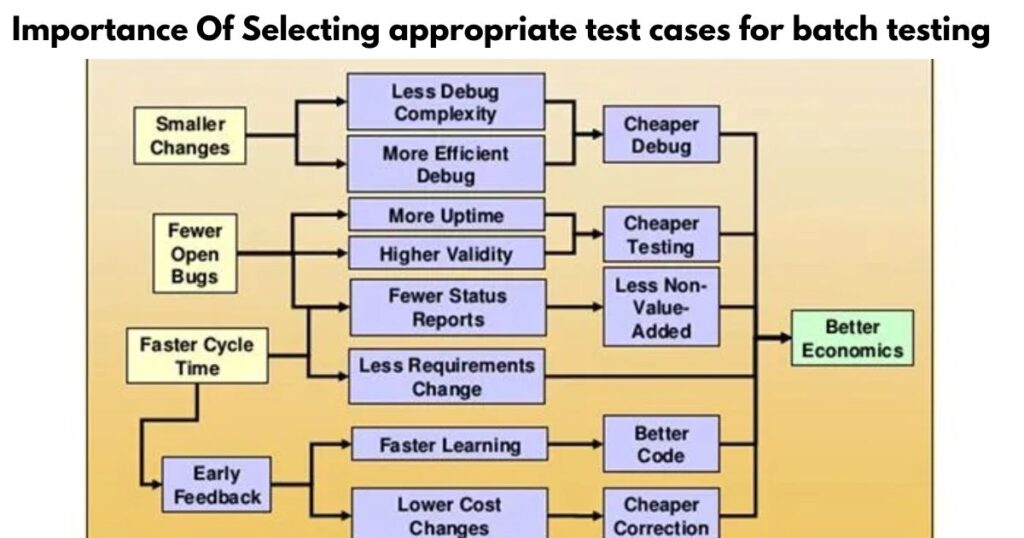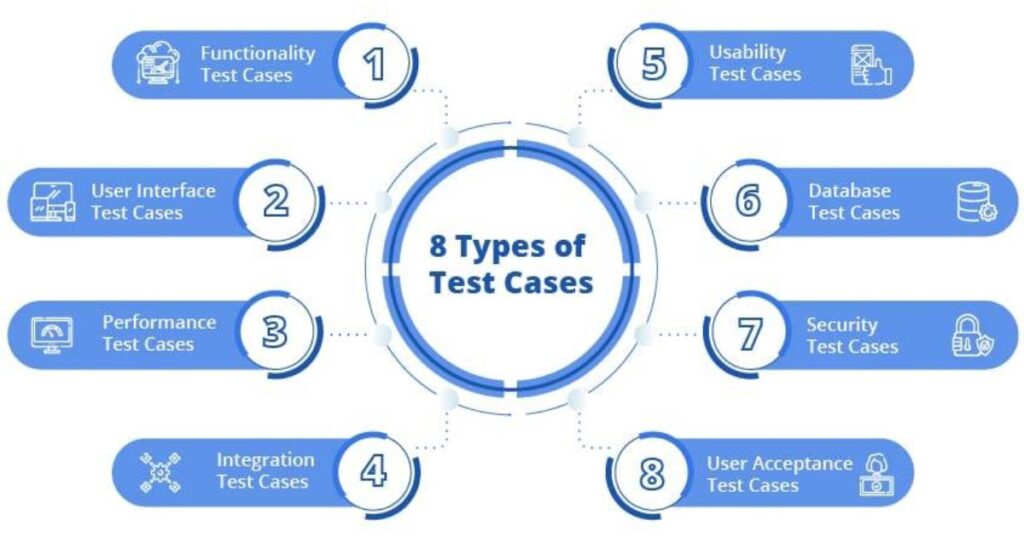Batch testing is a software testing technique where multiple numbers of test cases are to be executed at a time. It facilitates assessment of the overall system’s functionality and effectiveness. This method is common when processing large data or systems that contain many components that need to be tested.
It means that by distinguishing the main test cases for batch testing, it will be possible to achieve the maximum results when increasing general quality of the developed software.
Batch testing has several pros which include the following: The benefits of carrying out a batch test are as follows. Combined with other testing tools, it is widely applied when it is possible that the separate run of one or another given individual test case will require much time and/or be utterly unrealistic.
Importance Of Selecting appropriate test cases for batch testing

Choosing the right test cases for batch testing is crucial. It’s like picking the perfect ingredients for a recipe, get it wrong, and the whole dish falls flat. Good choices make your testing faster and more thorough. They help you find real problems quickly, without wasting time on unnecessary tests.
It’s about striking a balance between speed and quality. Think of it as creating a highlight reel of your software’s performance. By selecting wisely, you’ll get meaningful results that actually help improve your product. Remember, in batch testing, it’s not just about quantity – it’s about running the tests that matter most.
Considerations for Choosing Batch Testing-Friendly Test Cases
Picking the right test cases for batch testing is like choosing ingredients for a perfect recipe. You want tests that play well together and don’t cause a mess. First, look for tests that can run on autopilot – no need for human babysitting.
Make sure your tests are independent, like solo the exclusive art made by artists rather than a choir. You don’t want one test throwing off the others. Lastly, speed is key. Quick tests keep the batch moving smoothly, while slow ones can gum up the works. By keeping these points in mind, you’ll create a batch testing suite that’s efficient and effective.
What Types of Test Cases Are Most Suited for Batch Testing?

Batch testing shines with certain types of test cases. It’s great for regression testing, helping ensure new changes don’t break existing features. Data-driven tests work well too, allowing you to run the same test with different inputs. Repetitive scenarios are perfect for batch testing, saving time on routine checks.
It’s also handy for integration testing, performance testing, and end-to-end testing. Smoke tests in CI/CD pipelines benefit from batch processing. Parallel execution, usability testing, and cross-browser testing are other areas where batch testing excels. By choosing the right test cases, you can make your testing process faster and more efficient.
Regression Testing
Imagine you’re building a sandcastle and adding new towers. Regression testing is like checking if your original castle is still standing after each addition. In software, it ensures that new changes don’t break existing features. Batch testing is perfect for this because you can run all your old tests quickly to make sure everything still works as it should.
Data-Driven Testing
Think of this as baking cookies with different ingredients. You use the same recipe (test) but change the inputs (ingredients). Batch testing lets you run the same test with various data sets all at once. It’s like baking multiple batches of cookies simultaneously, each with a unique flavor, saving you time and effort.
Routine and Repetitive Scenarios
These are like your daily chores – necessary but tedious. In software testing, some checks need to be done regularly. Batch testing automates these repetitive tasks, running them all together. It’s like having a robot do all your chores at once while you focus on more important things.
Integration Testing
Imagine assembling a puzzle. Integration testing checks if all the pieces fit together correctly. Batch testing allows you to check multiple connections between different parts of your software simultaneously, ensuring everything works well together.
Performance Testing
This is like stress-testing a bridge by driving many cars over it at once. Performance testing checks how your software handles heavy loads. Batch testing is great for this because it can simulate many users or transactions at the same time, giving you a clear picture of your system’s limits.
End-to-end Testing
Think of this as taking a car for a test drive, checking everything from the engine to the radio. End-to-end testing examines the entire flow of your application. Batch testing helps by running through multiple complete scenarios quickly, ensuring the whole system works smoothly from start to finish.
Smoke Testing
Smoke testing is like a quick health check-up. It’s a fast way to see if the most critical parts of your software are working. Batch testing is ideal for smoke tests because it can quickly run through essential checks, especially useful in continuous integration where you need fast feedback.
Parallel Execution
Imagine cooking all parts of a meal at the same time instead of one by one. Parallel execution in batch testing runs multiple tests simultaneously on different parts of your software. This dramatically speeds up the testing process, especially for large applications.
Usability Testing
This is like having multiple people try out a new game controller to see if it’s comfortable and easy to use. In software, usability testing checks if your application is user-friendly. Batch testing can help by automating different user interactions and scenarios, giving you a broad view of how people might use your software.
Cross-Browser Testing
Think of this as making sure your favorite website looks good whether you’re using your phone, tablet, or computer. Cross-browser testing ensures your software works well on different browsers. Batch testing is excellent for this because it can run your tests on multiple browsers simultaneously, saving time and ensuring consistency across platforms.
How to do Manual and Automated Batch Testing?
Both methods have their place. Manual testing allows for human intuition and flexibility, while automated testing offers speed and consistency. The key is choosing the right approach for your specific testing needs and project requirements. Batch testing can be done both manually and automatically, each with its own approach. Let’s look at how to tackle both methods:
Manual Batch Testing:
- Prepare a list of test cases you want to run
- Group similar tests together for efficiency
- Execute tests in batches, recording results as you go
- Take breaks between batches to avoid fatigue and errors
- Review and analyze results after each batch
Automated Batch Testing:
- Choose a suitable automation tool for your needs
- Write scripts for your test cases, ensuring they’re independent
- Organize scripts into logical batches
- Set up your test environment and data
- Schedule batch runs, perhaps overnight or during off-hours
- Use reporting features to analyze results easily
Conclusion
Batch testing is a powerful tool in software quality assurance. It works best with regression, data-driven, and routine tests. Integration, performance, and end-to-end testing also benefit greatly. Smoke tests, parallel execution, usability, and cross-browser testing fit well too.
By choosing the right test cases, you can make your testing process faster and more thorough. Embrace batch testing to save time, catch bugs early, and ensure your software works smoothly across different scenarios.
FAQ’s
Is Batch testing possible in manual testing?
Yes, it’s possible. Testers can group similar tests and run them together manually. It’s less efficient than automated batch testing but still doable.
What is an example of batch testing?
A common example is running a set of regression tests overnight. This batch checks if new code changes have affected existing features across the entire application.
What is the batch process suitable for?
Batch processing is ideal for tasks that don’t need real-time processing. It’s great for handling large volumes of data, running complex calculations, or performing system-wide checks when immediate results aren’t required.

